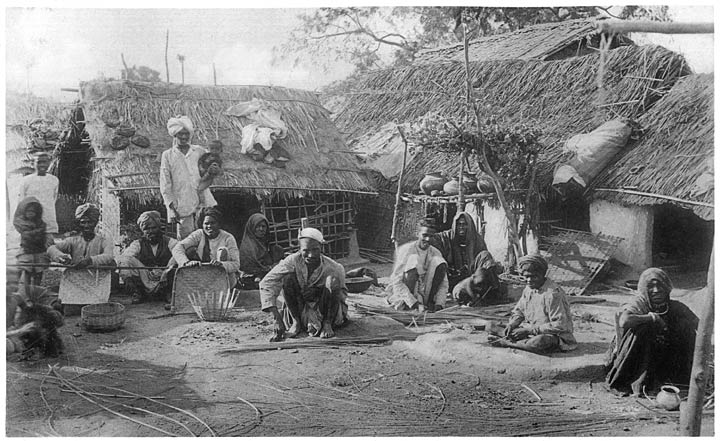|
Ashoka's Policy Of Dhamma
''Dhamma'' (; ) is a set of edicts that formed a policy of the 3rd Mauryan emperor Ashoka the Great, who succeeded to the Mauryan throne in modern-day India around 269 B.C.E. Ashoka is considered one of the greatest kings of ancient India for his policies of public welfare. Definition The word ''dhamma'' is the Pāli form of the Sanskrit word ''dharma''. There have been attempts to define and find equivalent English words for it, such as "piety", "moral life" and "righteousness" or "duty" but scholars could not translate it into English because it was coined and used in a specific context. The word ''Dhamma'' has multiple meanings in the literature and thought of ancient India. The best way to understand what Ashoka the great means by ''Dhamma'' is to read his edicts, which were written to explain the principles of ''Dhamma'' to the people of that time throughout the empire. ''Dhamma'' was not a particular religious faith or practice, or an arbitrary formulated royal policy ... [...More Info...] [...Related Items...] OR: [Wikipedia] [Google] [Baidu] |
Mauryan Dynasty
The Maurya Empire was a geographically extensive Iron Age historical power in South Asia with its power base in Magadha. Founded by Chandragupta Maurya around c. 320 BCE, it existed in loose-knit fashion until 185 BCE. The primary sources for the written records of the Mauryan times are partial records of the lost history of Megasthenes in Roman texts of several centuries later; the Edicts of Ashoka, which were first read in the modern era by James Prinsep after he had deciphered the Brahmi and Kharoshthi scripts in 1838; and the ''Arthashastra'', a work first discovered in the early 20th century,: "... another source that enjoyed high standing as a description of the early Mauryan state was the Arthashastra, a treatise on power discovered in the early twentieth century." and previously attributed to Chanakya, but now thought to be composed by multiple authors in the first centuries of the common era. Archaeologically, the period of Mauryan rule in South Asia falls in ... [...More Info...] [...Related Items...] OR: [Wikipedia] [Google] [Baidu] |
Buddhist
Buddhism, also known as Buddhadharma and Dharmavinaya, is an Indian religion and List of philosophies, philosophical tradition based on Pre-sectarian Buddhism, teachings attributed to the Buddha, a wandering teacher who lived in the 6th or 5th century Before the Common Era, BCE. It is the Major religious groups, world's fourth-largest religion, with about 500 million followers, known as Buddhists, who comprise four percent of the global population. It arose in the eastern Gangetic plain as a movement in the 5th century BCE, and gradually spread throughout much of Asia. Buddhism has subsequently played a major role in Asian culture and spirituality, eventually spreading to Western world, the West in the 20th century. According to tradition, the Buddha instructed his followers in a path of bhavana, development which leads to Enlightenment in Buddhism, awakening and moksha, full liberation from ''Duḥkha, dukkha'' (). He regarded this path as a Middle Way between extremes su ... [...More Info...] [...Related Items...] OR: [Wikipedia] [Google] [Baidu] |
Middle Way
The Middle Way (; ) as well as "teaching the Dharma by the middle" (''majjhena dhammaṃ deseti'') are common Buddhist terms used to refer to two major aspects of the Dharma, that is, the teaching of the Buddha. The first phrasing, the Middle Way, refers to a spiritual practice that steers clear of both extreme asceticism and sensual indulgence. This spiritual path is defined as the Noble Eightfold Path that leads to awakening. The second formulation, "teaching the Dharma by the middle," refers to how the Buddha's Dharma (Teaching) approaches ontological issues of existence and personal identity by avoiding eternalism (or absolutism) and annihilationism (or nihilism). Early Buddhist texts In the early Buddhist texts, there are two aspects of the Middle Way taught by the Buddha. Scholar David Kalupahana describes these as the "philosophical" Middle Way and the "practical" Middle Way. He associates these with the teachings found in the ''Kaccānagotta-sutta'' and the ' ... [...More Info...] [...Related Items...] OR: [Wikipedia] [Google] [Baidu] |
Brahminism
The historical Vedic religion, also called Vedism or Brahmanism, and sometimes ancient Hinduism or Vedic Hinduism, constituted the religious ideas and practices prevalent amongst some of the Indo-Aryan peoples of the northwest Indian subcontinent (Punjab and the western Ganges plain) during the Vedic period ( 1500–500 BCE). These ideas and practices are found in the Vedic texts, and some Vedic rituals are still practised today. The Vedic religion is one of the major traditions which shaped modern Hinduism, though present-day Hinduism is significantly different from the historical Vedic religion. The Vedic religion has roots in the Indo-Iranian culture and religion of the Sintashta ( 2200–1750 BCE) and Andronovo ( 2000–1150 BCE) cultures of Eurasian Steppe. This Indo-Iranian religion borrowed "distinctive religious beliefs and practices" from the non-Indo-Aryan Bactria–Margiana culture (BMAC; 2250–1700 BCE) of south of Central Asia, when pastoral Indo-Aryan tribes ... [...More Info...] [...Related Items...] OR: [Wikipedia] [Google] [Baidu] |
Kshatriya
Kshatriya () (from Sanskrit ''kṣatra'', "rule, authority"; also called Rajanya) is one of the four varnas (social orders) of Hindu society and is associated with the warrior aristocracy. The Sanskrit term ''kṣatriyaḥ'' is used in the context of later Vedic society wherein members were organised into four classes: ''brahmin'', kshatriya, '' vaishya,'' and '' shudra''. History Early Rigvedic tribal monarchy The administrative machinery in Vedic India was headed by a tribal king called a Rajan whose position may or may not have been hereditary. The king may have been elected in a tribal assembly (called a Samiti), which included women. The Rajan protected the tribe and cattle; was assisted by a priest; and did not maintain a standing army, though in the later period the rulership appears to have risen as a social class. The concept of the fourfold varna system is not yet recorded. Later Vedic period The hymn '' Purusha Sukta'' in the ''Rigveda'' describes the symbolic crea ... [...More Info...] [...Related Items...] OR: [Wikipedia] [Google] [Baidu] |
Brahmans
Brahmin (; ) is a '' varna'' (theoretical social classes) within Hindu society. The other three varnas are the ''Kshatriya'' (rulers and warriors), ''Vaishya'' (traders, merchants, and farmers), and ''Shudra'' (labourers). The traditional occupation of Brahmins is that of priesthood ( purohit, pandit, or pujari) at Hindu temples or at socio-religious ceremonies, and the performing of rite of passage rituals, such as solemnising a wedding with hymns and prayers.James Lochtefeld (2002), Brahmin, The Illustrated Encyclopedia of Hinduism, Vol. 1: A–M, Rosen Publishing, , page 125 Traditionally, Brahmins are accorded the supreme ritual status of the four social classes, and they also served as spiritual teachers (guru or acharya). In practice, Indian texts suggest that some Brahmins historically also became agriculturalists, warriors, traders, and had also held other occupations in the Indian subcontinent.GS Ghurye (1969), Caste and Race in India, Popular Prakashan, , pages 15� ... [...More Info...] [...Related Items...] OR: [Wikipedia] [Google] [Baidu] |
Vedic
upright=1.2, The Vedas are ancient Sanskrit texts of Hinduism. Above: A page from the '' Atharvaveda''. The Vedas ( or ; ), sometimes collectively called the Veda, are a large body of religious texts originating in ancient India. Composed in Vedic Sanskrit, the texts constitute the oldest layer of Sanskrit literature and the oldest scriptures of Hinduism. There are four Vedas: the Rigveda, the Yajurveda, the Samaveda and the Atharvaveda. Each Veda has four subdivisions – the Samhitas ( mantras and benedictions), the Brahmanas (commentaries on and explanation of rituals, ceremonies and sacrifices – Yajñas), the Aranyakas (text on rituals, ceremonies, sacrifices and symbolic-sacrifices), and the Upanishads (texts discussing meditation, philosophy and spiritual knowledge).Gavin Flood (1996), ''An Introduction to Hinduism'', Cambridge University Press, , pp. 35–39A Bhattacharya (2006), ''Hindu Dharma: Introduction to Scriptures and Theology'', , pp. 8–14; George ... [...More Info...] [...Related Items...] OR: [Wikipedia] [Google] [Baidu] |
Heterodox
In religion, heterodoxy (from Ancient Greek: , + , ) means "any opinions or doctrines at variance with an official or orthodox position". ''Heterodoxy'' is also an ecclesiastical jargon term, defined in various ways by different religions and churches. For example, in some groups, heterodoxy may describe beliefs that differ from strictly orthodox views but that fall short either of formal or of material heresy. Christianity Eastern Orthodoxy In the Eastern Orthodox Church, the term is used primarily in reference to Christian churches and denominations not belonging to the communion of Eastern Orthodox churches and espousing doctrines contrary to the received Holy Tradition. Protestantism Charles Spurgeon said: u shall find spiritual life in every church. I know it is the notion of the bigot, that all the truly godly people belong to the denomination which he adorns. Orthodoxy is my doxy; heterodoxy is anybody else's doxy who does not agree with me. Islam The Arabic word ... [...More Info...] [...Related Items...] OR: [Wikipedia] [Google] [Baidu] |
Caste
A caste is a Essentialism, fixed social group into which an individual is born within a particular system of social stratification: a caste system. Within such a system, individuals are expected to marry exclusively within the same caste (endogamy), follow lifestyles often linked to a particular occupation, hold a ritual status observed within a hierarchy, and interact with others based on cultural notions of social exclusion, exclusion, with certain castes considered as either more pure or more polluted than others. The term "caste" is also applied to morphological groupings in eusocial insects such as ants, bees, and termites#caste, termites. The paradigmatic ethnographic example of caste is the division of India's Hinduism, Hindu society into rigid social groups. Its roots lie in South Asia's ancient history and it still exists; however, the economic significance of the caste system in India seems to be declining as a result of urbanisation and affirmative action programs. ... [...More Info...] [...Related Items...] OR: [Wikipedia] [Google] [Baidu] |
Varna (Hinduism)
Varna (, ), in the context of Hinduism, refers to a social class within a hierarchical traditional Hindu society. The ideology of varna is epitomized in texts like '' Manusmriti'', which describes and ranks four varnas, and prescribes their occupations, requirements and duties, or '' Dharma''. *Brahmins: Vedic scholars, priests or teachers. * Kshatriyas: Rulers, administrators or warriors. * Vaishyas: Agriculturalists, farmers or merchants. * Shudras: Artisans, labourers or servants. This quadruple division is a form of social stratification, quite different from the more nuanced system of '' Jātis'', which correspond to the term "caste". The varna system is discussed in Hindu texts, and understood as idealised human callings. The concept is generally traced back to the '' Purusha Sukta'' verse of the Rigveda. In the post- Vedic period, the varna division is described in the '' Mahabharata,'' ''Puranas'' and in the '' Dharmashastra literatures''. The commentary on the Varna ... [...More Info...] [...Related Items...] OR: [Wikipedia] [Google] [Baidu] |
Urban Culture
Urban culture is the culture of towns and cities. The defining theme is the presence of a large population in a limited space that follows social norms. This makes it possible for many subcultures close to each other, exposed to social influence without necessarily intruding into the private sphere.Tönnies, Ferdinand: Community and society, 1957. Ultimately, urban culture offers for diverse perspectives, more resources in the medical field, both physically and mentally, but it also faces challenges in maintaining social cohesion. Globally, urban areas tend to hold concentrations of power, such as government capitals and corporate headquarters, and the wealthy and powerful people that are employed in them. Cities also organize people, create norms, beliefs, and values. As outlined by Max Weber in his book, ''The City'', "There are five things that make a city: fortification, market, a law code, an association of urban citizenry creating a sense of municipal corporateness, and su ... [...More Info...] [...Related Items...] OR: [Wikipedia] [Google] [Baidu] |







